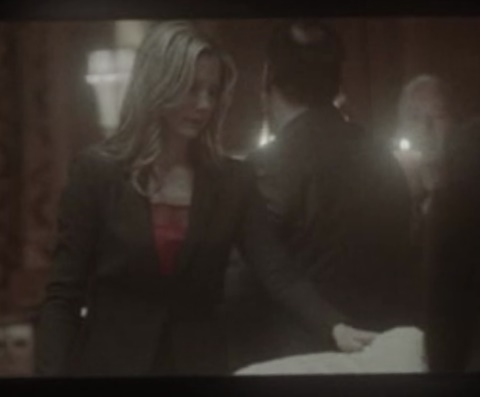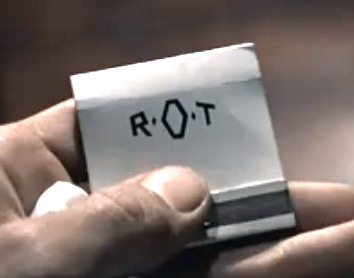Click the "timelessness" quote below for the "Bell, Book and Candle" scene
with Kim Novak and James Stewart atop the Flatiron Building.
"Before time began . . . ." — Optimus Prime
![]()
![]()
Click the "timelessness" quote below for the "Bell, Book and Candle" scene
with Kim Novak and James Stewart atop the Flatiron Building.
"Before time began . . . ." — Optimus Prime
![]()
![]()
The New York Times today reports the death at 90 of
Peggy Mellon Hitchcock, who arranged for Timothy Leary's
accomodation at the Hitchcock Estate, on April 9, 2024 . . .

Also on April 9 —
A rather different Hitchcock image —
This is from a Log24 search for Hitchcock Cube.
"Before time began . . ." — Optimus Prime.
— Helen Mirren on her 2010 film “The Debt”
An obituary from BBC News on Sept. 22, 2014:
Israeli Mossad spy Mike Harari dies, aged 87
BBC News did not give a date for the death.
The New York Times now says that Harari died on Sunday, Sept. 21, 2014.
This journal on that date —
From the BBC America TV series “Intruders,” Season 1, Episode 4,
“Ave Verum Corpus “ (33:34 of 45 min.):

Mira Sorvino pays her respects to a distinguished corpse.
Modernity: A Film by
Alfred Hitchcock:
“… the most thoroughgoing modernist design element in Hitchcock’s films arises out of geometry, as Francois Regnault has argued, identifying ‘a global movement for each one, or a “principal geometric or dynamic form,” which can appear in the pure state in the credits….'” –Peter J. Hutchings (my italics)
John Lithgow
is 64 today.
Happy birthday.

* For Hitchcock fans . . .
C. Gordon Bell, Creator of a Personal Computer Prototype, Dies at 89 .
Bell reportedly died on Friday, May 17, 2024.
Related concepts:
The_Final_Cut_(2004_film) and . . .
From a search in this journal for Kochen —
Related material — Hitchcock in this journal and Mermin Pentagrams on the Web.
From the Belgian artist of the March 25 New Yorker cover —
“There comes a time when the learner has identified
the abstract content of a number of different games
and is practically crying out for some sort of picture
by means of which to represent that which has been
gleaned as the common core of the various activities.”
— Article at Zoltan Dienes’s website
From "When Novelists Become Cubists," by Andre Furlani—
"The architectonics of a narrative," Davenport says,
"are emphasized and given a role to play in dramatic effect
when novelists become Cubists; that is, when they see
the possibilities of making a hieroglyph, a coherent symbol,
an ideogram of the total work. A symbol comes into being
when an artist sees that it is the only way to get all the meaning in."
* See "Starlight Like Intuition" by Delmore Schwartz.
The "Twelve" of the title may be regarded as cube edges.
There were no Log24 posts on March 17 or March 19.
From a March 18 post, a flashback to February —
"In The Girl Before, the house is almost a shapeshifter as it fits
the needs of the story. Sometimes it feels like an art gallery,
with its inhabitants on display. It's a smart home (of course it is),
and its automated locks and lights and creepily intuitive A.I.
give it the feel of a high-tech prison. Sometimes it's a mausoleum
for Jane, who's dealing with the recent pain of a miscarriage.
Sometimes it's a fortress for Emma, who's dealing with the recent
trauma of a home invasion." — Joe Reid at Primetimer.com.
Related art — The non-Rubik 3x3x3 cube —
The above structure illustrates the affine space of three dimensions
over the three-element finite (i.e., Galois) field, GF(3). Enthusiasts
of Judith Brown's nihilistic philosophy may note the "radiance" of the
13 axes of symmetry within the "central, structuring" subcube.
I prefer the radiance (in the sense of Aquinas) of the central, structuring
eightfold cube at the center of the affine space of six dimensions over
the two-element field GF(2).
The title is that of a book of poems by Delmore Schwartz.
|
From "Searching for God in the Next Apartment," Throughout Schwartz's poetry a question of belief is central. He thought we could not live without an interpretation of the whole of life, and that modern social orders were inevitably deficient in satisfying this need. He wrote studies and poetry explicitly concerned with the decline of Christian belief and the impossibility of any belief whatsoever. He read Rimbaud's ''Season in Hell,'' Valery's ''Cimetiere Marin,'' Arnold's ''Dover Beach,'' Hardy's ''Oxen,'' Stevens' ''Sunday Morning'' as poems forged in just such a dilemma. His own preferred poem, ''Starlight Like Intuition Pierced the Twelve,'' continued this argument. |
See also Log24 posts tagged Central Myth, and the following image:
According to Lt. Col. Wayne M. McDonnell in June 1983 —
“… it is accurate to observe that when a person experiences
the out-of- body state he is, in fact, projecting that eternal spark
of consciousness and memory which constitutes the ultimate
source of his identity….”
— Section 27, “Consciousness in Perspective,” of
“Analysis and Assessment of Gateway Process.”
A related quotation —
“In truth, the physical AllSpark is but a shell….”
— https://tfwiki.net/wiki/AllSpark
From the post Ghost in the Shell (Feb. 26, 2019) —
See also, from posts tagged Ogdoad Space —
“Like the Valentinian Ogdoad— a self-creating theogonic system
of eight Aeons in four begetting pairs— the projected eightfold work
had an esoteric, gnostic quality; much of Frye’s formal interest lay in
the ‘schematosis’ and fearful symmetries of his own presentations.”
— From p. 61 of James C. Nohrnberg’s “The Master of the Myth
of Literature: An Interpenetrative Ogdoad for Northrop Frye,”
Comparative Literature , Vol. 53 No. 1, pp. 58-82, Duke University
Press (quarterly, January 2001)
— as well as . . .
Related illustration from posts tagged with
the quilt term Yankee Puzzle —
Writer Robert Avrech on director Brian De Palma —
“Both Brian and I greatly admire Alfred Hitchcock so we were
pretty much on the same page aesthetically. That’s how I came
to write Body Double , a superb thriller that immediately thrust
me into the Hollywood limelight.”
— https://www.opednews.com/populum/page.php?
f=Behind-the-Scenes-with-Hol-by-Joan-Brunwasser-
American-Jews_Hollywood_Interviews_Judaism-Jewish-
131219-897.html

Writer Robert Avrech on director Brian De Palma —
“Both Brian and I greatly admire Alfred Hitchcock so we were
pretty much on the same page aesthetically. That’s how I came
to write Body Double , a superb thriller that immediately thrust
me into the Hollywood limelight.”
— https://www.opednews.com/populum/page.php?
f=Behind-the-Scenes-with-Hol-by-Joan-Brunwasser-
American-Jews_Hollywood_Interviews_Judaism-Jewish-
131219-897.html
See also Avrech in this journal —
The opening lines of Eliot's Four Quartets —
"Time present and time past
Are both perhaps present in time future,
And time future contained in time past."
Perhaps.
Those who prefer geometry to rhetoric may also prefer
to Eliot's lines the immortal opening of the Transformers saga —
"Before time began, there was the Cube."
One version of the Cube —
"Plan 9 deals with the resurrection of the dead."
"When the men on the chessboard
get up and tell you where to go . . ."
"It never occurred to me that someone could so explicitly reject
the core experience of something like Chartres."
— Christopher Alexander to Peter Eisenman, 1982
For a less dramatic core experience , see Hitchcock.
From Cambridge Core, suggested by a reference to
that website in the previous post and by the following
bibliographic data . . .
https://doi.org/10.1017/fmp.2016.5
Downloaded from https://www.cambridge.org/core
on 10 Nov 2017 at 19:06:19

See Conwell + Princeton in this journal.
Related art —
From a book review quoted here in yesterday’s post
of 12:41 PM ET, “Special Topics” —
“That teacher, Hannah Schneider, has the magnetism of
Miss Jean Brodie and the film-noir mystique of Lauren Bacall.
When Blue meets her, in a ‘Hitchcock cameo,’ by the frozen-food
section at a grocery store, she falls under her spell. ‘She had an
elegant sort of romantic, bone-sculpted face, one that took well to
both shadows and light,’ Blue recalls. ‘Most extraordinary though
was the air of a Chateau Marmont bungalow about her, a sense
of RKO, which I’d never before witnessed in person.’ Hannah
teaches a course on cinema in a room lined with posters . . . .“
From a Facebook page related to the death yesterday morning at
Webster University of the teacher of a course on cinema —
“I need a photo opportunity . . . .” — Paul Simon
The title of the film in the cover photo above is not without relevance.
Happy birthday to Mira Sorvino.
Related material:
Today’s posts Hitchcockian, Darkness and Light,
and Requiem for Abse.
Some context for the last of these:
The conclusion of last night’s episode of Intruders .
This journal on July 2, 2007:
(Click for more of the post)
A text:

Related material from July 3, 2007:
(Click for a clearer image of the quiz below.)
For answers to the quiz, see Jonathan Langdale.
For a deeper look at Achebe, see the following quote
in the context of last night's post on Hitchcock —
— as well as Time + Eternity + Cloth in this journal.
For the first two words of the title,
see the previous post.
For the third word, see a review of the recent film "Hitchcock"
about the director and Janet Leigh during the filming of "Psycho"—
Hopkins' Hitchcock more or less eats out of Janet's hand
when she feeds him candy corn during a drive together
(the reference is to the candy Norman Bates is devouring
when he's interviewed by Martin Balsam's detective).
A story that demands the blended talents of Hitchcock and of
Mel Brooks to do it justice:
See also a 2010 New York Times review of
DeLillo's novel Point Omega . The review is titled,
without any other reference to L'Engle's classic tale
of the same name, "A Wrinkle in Time."
Related material: The Crosswicks Curse.
"Hitchcock made movies with many actresses
who had the aloof, Nordic beauty he admired."
— Alessandra Stanley in today's NY Times
Aloof, Nordic…
Freeze Frame

Related material:
(Continued : See Identity, decomposition, and Sunshine Cleaning . )

"What, one might ask, does the suave, debonaire
Roger Thornhill have to do with the notion of
decomposition (emphasized by the unusual
coffin-shaped 'O') implied in the acronym
formed by his initials?"
— Paul Gordon, Dial "M" for Mother ,
Fairleigh Dickinson University Press, 2008, page 97
"To stay with the context of Cavell's brilliant reading
of the film's relation to Hamlet, 'there is something rot -ten
in North by Northwest ' that also needs to be explained."
— Paul Gordon, op. cit., page 98
Related remarks— Sunday morning, May 20, 2007.
On the middle initial of the Cary Grant character
in yesterday's post Summer Reading—
Click image for further details.
"The concept of nothingness follows Roger Thornhill throughout North by Northwest , first as another identity imposes itself upon him and later as circumstances force him to run from Vandamm as well as the police. When Eve asks him what the 'O' in 'ROT' stands for, Thornhill can only answer 'nothing.' His middle initial's lack of meaning connects well to the overall theme of the human self as possibly nothing." —Hitchcock and Identity, by Emily Pilgrim
Related material— Elementary Finite Geometry (Aug. 1).
See, too, a post for Holy Cross Day in 2002.
"The space in which a film takes place"—
See Eightfold Geometry, linked to here on the date of Boyle's death.
The Plane of Time
From tomorrow's NY Times Book Review, Geoff Dyer's review of DeLillo's new novel Point Omega is now online—
"The book begins and ends with Douglas Gordon’s film project '24 Hour Psycho' (installed at the Museum of Modern Art in Manhattan in 2006), in which the 109-minute Hitchcock original is slowed so that it takes a full day and night to twitch by. DeLillo conveys with haunting lucidity the uncanny beauty of 'the actor’s eyes in slow transit across his bony sockets,' 'Janet Leigh in the detailed process of not knowing what is about to happen to her.' Of course, DeLillo being DeLillo, it’s the deeper implications of the piece— what it reveals about the nature of film, perception and time— that detain him. As an unidentified spectator, DeLillo is mesmerized by the 'radically altered plane of time': 'The less there was to see, the harder he looked, the more he saw.'
This prologue and epilogue make up a phenomenological essay on one of the rare artworks of recent times to merit the prefix 'conceptual.'"
Related material:
Steering a Space-Plane
(February 2, 2003)
Holly Day
(February 3, 2010)
Attitude Adjustment
(February 3, 2010)

Cover illustration by Stephen Savage,
NY Times Book Review,
Feb. 2 (Candlemas), 2003
“We live the time that a match flickers.”
– Robert Louis Stevenson, Aes Triplex

Cover art by Barclay Shaw reprinted
from an earlier (1984) edition
Philip K. Dick as a
window wraith (see below)
"… the kind of guy who can't drink one cup of coffee without drinking six, and then stays up all night to tell you what Schopenhauer really said and how it affects your understanding of Hitchcock and what that had to do with Christopher Marlowe."
— as well as by the illustrations of Gopnik's characterization in Kernel of Eternity, and by the following passage from Gopnik's 2005 novel The King in the Window:
"What's a window wraith?"
"It's someone who once lived in the ordinary world who lives now in a window, and makes reflections of the people who pass by and look in."
"You mean you are a ghost?!" Oliver asked, suddenly feeling a little terrified.
"Just the opposite, actually. You see, ghosts come from another world and haunt you, but window wraiths are the world. We're the memory of the world. We're here for good. You're the ones who come and go like ghosts. You haunt us."
Related material: As noted, Kernel of Eternity, and also John Tierney's piece on simulated reality in last night's online New York Times. Whether our everyday reality is merely a simulation has long been a theme (as in Dick's novel above) of speculative fiction. Interest in this theme is widespread, perhaps partly because we do exist as simulations– in the minds of other people. These simulations may be accurate or may be– as is perhaps Gopnik's characterization of Philip K. Dick– inaccurate. The accuracy of the simulations is seldom of interest to the simulator, but often of considerable interest to the simulatee.
The cover of the Aug. 20 New Yorker in which the Adam Gopnik essay appears may also be of interest, in view of the material on diagonals in the Log24 entries of Aug. 1 linked to in yesterday's entry:
"Summer Reading,"
by Joost Swarte
Adam Gopnik in
The New Yorker of
August 20, 2007–
"… the kind of guy who can't drink one cup of coffee without drinking six, and then stays up all night to tell you what Schopenhauer really said and how it affects your understanding of Hitchcock and what that had to do with Christopher Marlowe."
Modernity: A Film by
Alfred Hitchcock:
"… the most thoroughgoing modernist design element in Hitchcock's films arises out of geometry, as Francois Regnault has argued, identifying 'a global movement for each one, or a "principal geometric or dynamic form," which can appear in the pure state in the credits….'" –Peter J. Hutchings (my italics)
Epilogue:
Adam Gopnik is also the author
of The King in the Window, a tale
of the Christian feast of Epiphany
and a sinister quantum computer.
For more on Epiphany, see
the Log24 entries of August 1.
For more on quantum computing,
see What is Quantum Computation?.
See also
the previous entry.
George Tabori
“BERLIN (AP) — Hungarian-born playwright and director George Tabori, a legend in Germany’s postwar theater world whose avant-garde works confronted anti-Semitism, died Monday [July 23, 2007]. He was 93.
Tabori, who as recently as three years ago dreamed of returning to stage to play the title role in Shakespeare’s ‘King Lear,’ died in his apartment near the theater, the Berliner Ensemble said Tuesday, noting that friends and family had accompanied him through his final days. No cause of death was given.
Born into a Jewish family in Budapest on May 24, 1914, Tabori fled in 1936 to London, where he started working for the British Broadcasting Corp., and became a British citizen. His father, and other members of his family, were killed at Auschwitz.
Tabori moved to Hollywood in the 1950s, where he worked as a scriptwriter, most notably co-writing the script for Alfred Hitchcock’s 1953 film, ‘I Confess.’
He moved to Germany in the 1970s and launched a theater career that spanned from acting to directing to writing. He used sharp wit and humor in his plays to examine the relationship between Germany and the Jews, as well as attack anti-Semitism.
Among his best-known works are ‘Mein Kampf,’ set in the Viennese hostel where Adolf Hitler lived from 1910-1913, and the ‘Goldberg Variations,’ both dark farces that poke fun at the Nazis.”
From Year of Jewish Culture:
“The year 2006 marks the 100th anniversary of the establishment of the Jewish Museum in Prague.”
From the related page Programme (October-December):
“Divadlo v Dlouhé
George Tabori: GOLDBERGOVSKÉ VARIACE / THE GOLDBERG VARIATIONS, 19 October, 7 p.m. A comedy on creation and martyrdom.”
|
From Log24 on the date of 
The above is from Variable Resolution 4–k Meshes: Concepts and Applications (pdf), by Luiz Velho and Jonas Gomes. See also Symmetry Framed |
|
Theme (Plato, Meno)
 Click on “variations” above |
Powered by WordPress